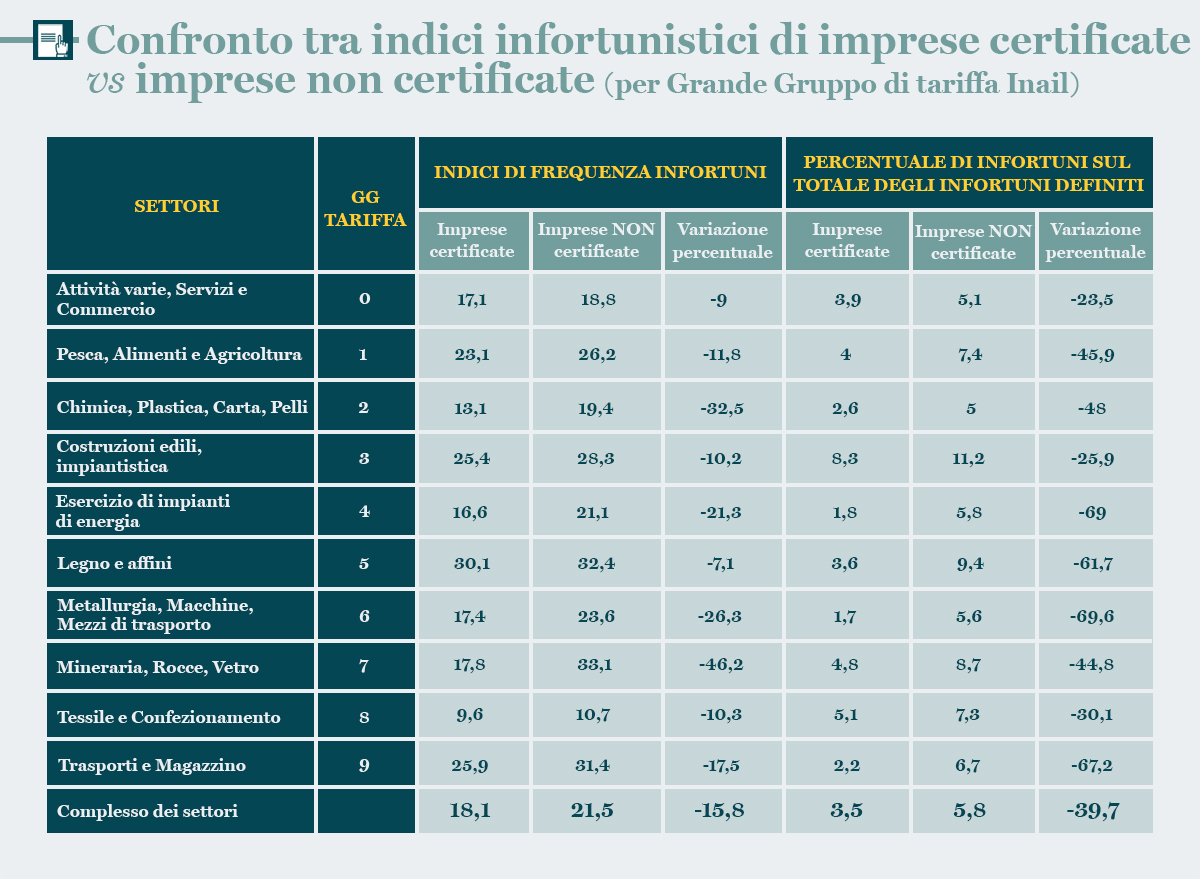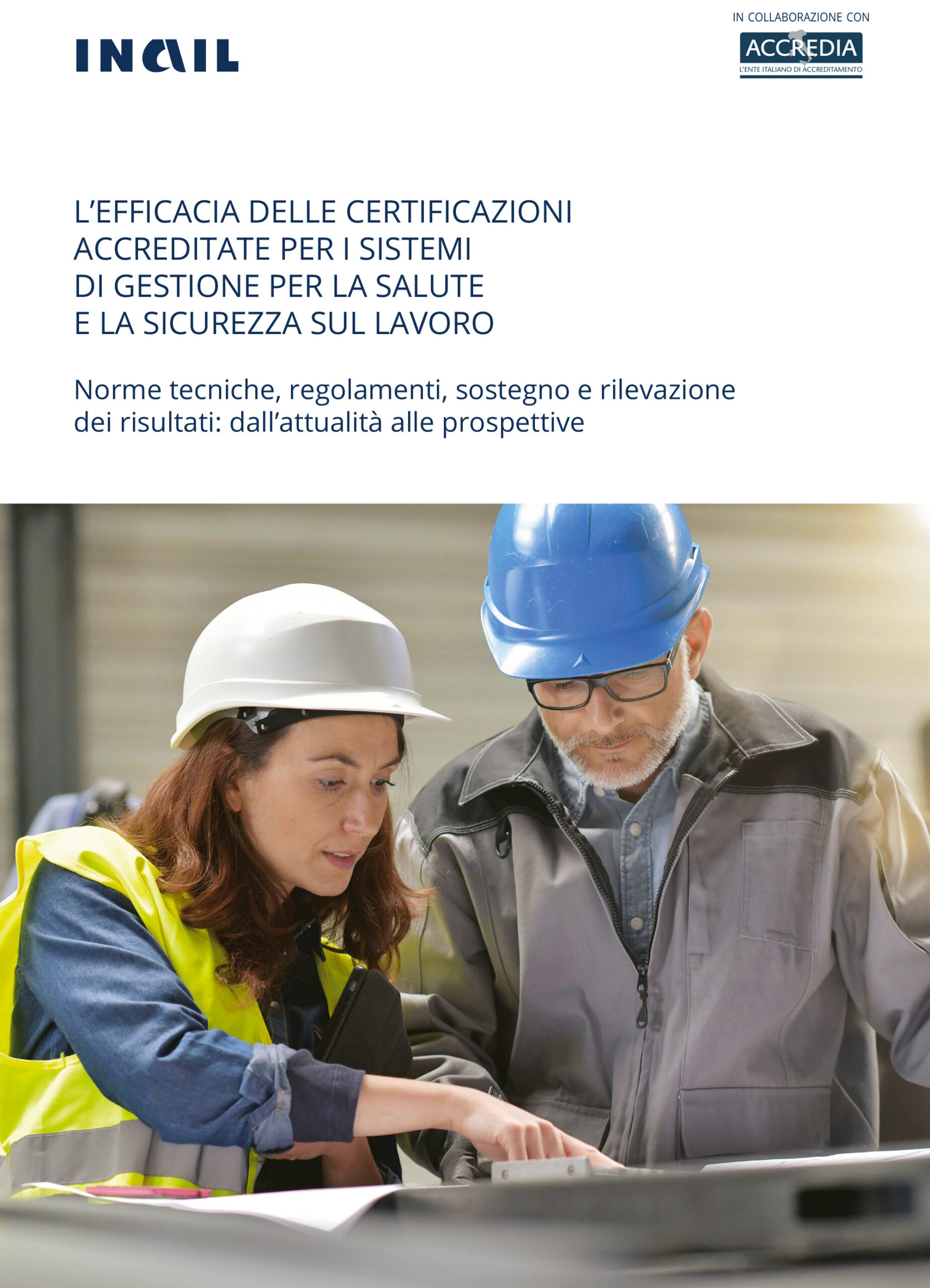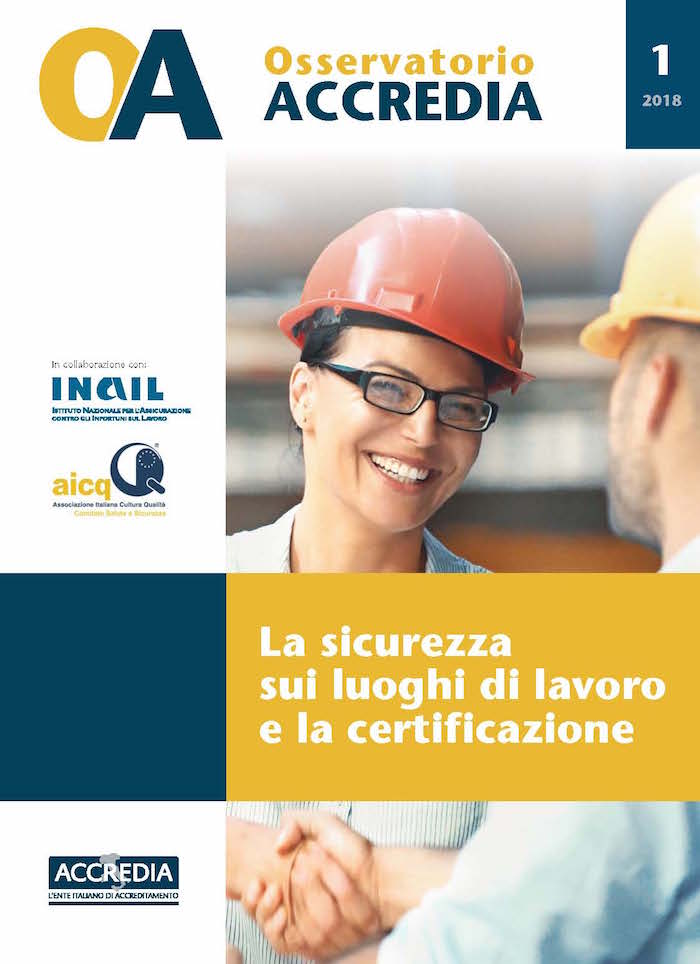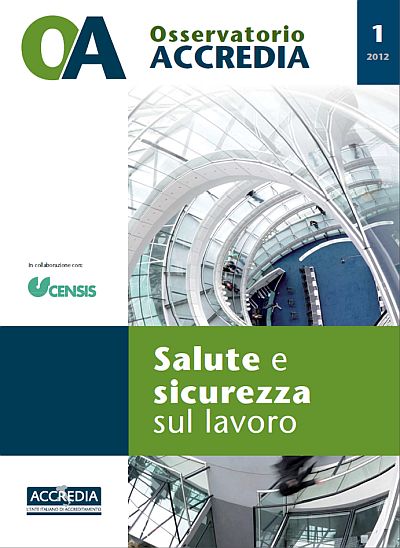Safety at work
Protection for workers, value for the company
The adoption of an occupational health and safety management system protects workers and represents an investment for the company, as it reduces the risk of costs associated with accidents and injuries.
Adopting an occupational health and safety management system protects workers and represents an investment for the company. Promoting a culture of safety, going beyond the vision of regulatory obligation, is essential. An effective prevention system involves all workers and is integrated into company strategies.
Prevention and certification
Prevention becomes a global approach that guides company strategies thanks to accredited certification that guarantees compliance with rules, documents quality, and promotes healthy competition.
To be effective, any prevention practice aimed at guiding individual and collective behaviour towards the reduction or elimination of health and safety risks must be included in company strategies, not only as an ethical value, but as a factor of organizational development and competitive advantage.
The most recent national and international legislation integrates the individual dimension of the right to health with its collective dimension. At the socio-cultural level, too, there is a transition from a social protection system based on protection from disease to a system focused on health protection, understood, according to the World Health Organization’s definition, as a state of complete physical, mental, and social well-being.
Today’s approach to safety is multidimensional, taking into account many aspects – health, physical, psychological, legal, social, cultural, and economic – and involving various subjects – Institutions, social stakeholders, companies, and associations – with the individual worker as the target, but within the context of their community.
In this context, many companies have chosen to adopt a occupational health and safety management system in accordance with technical standard UNI ISO 45001, obtaining the relevant certification through a body accredited by Accredia.
The transition from a basic level of safety to a certified level of safety leads to a decrease in the number of accidents of approximately 16% and a reduction in their severity of 40%, as demonstrated by the study carried out by Inail for the Accredia Observatory “Occupational health and safety and certification”, which compares the accident rates of certified companies with those of non-certified companies in the various sectors identified by the tariff groups of the National Institute for Insurance against Accidents at Work (INAIL).
Safety and prevention
Promoting a culture of safety at work reduces risks and improves business efficiency. An effective prevention system requires integrated strategies for certified management.
Given the high number of accidents and deaths in the workplace, there is an increasing need for effective measures and good practices that promote a culture of safety and prevention, in order to make the production process more efficient by eliminating and controlling the main risk factors.
Promoting a culture of safety means overcoming the still widespread belief that compliance with regulatory requirements, often seen as a burden and an organizational obstacle, is the only way to effectively manage risk prevention and protect health and safety in the workplace.
An adequate prevention system must be fuelled by the awareness of all workers and can be implemented thanks to the voluntary certification of the management system for occupational health and safety.

Certifications for safety at work
Occupational health and safety management systems integrate prevention policies. ISO 45001 certification issued by accredited bodies guarantees conformity and commitment to the well-being of workers.
Through occupational health and safety management systems, companies have a powerful tool that integrates risk prevention policies and health and safety objectives within the corporate organizational structure.
The certificate of conformity is obtained after passing specific audits by bodies accredited according to the ISO/IEC 17021-1 accreditation standard and other mandatory documents prepared by accreditation bodies around the world.
The management system certification is issued in conformity with the international standard ISO 45001 “Occupational health and safety management systems – Requirements with guidance for use”, which establishes a framework for improving safety, reducing risks in the workplace, and improving the health and well-being of workers.
Created to ensure consistency between the various ISO standards on management systems, ISO 45001 adopts the High Level Structure (HLS) and the main new features:
-
Risk-based thinking
In the new risk-based approach, risk is defined as the “effect of uncertainty” and therefore understood in a broad sense. It can have a positive or negative connotation and guide the company to focus on both risks and opportunities to improve system performance.
- Context analysis
The design of the management system must take into account the context in which the organization operates in its broadest sense, including the logistical, urban, social, cultural, political, legal, regulatory aspects of the market sector, and many others. The analysis allows for an understanding of the internal factors, but above all the external factors, that can influence the performance of the system.
- Leadership
Senior management must make a strong commitment so that it is taken up at all levels of the chain of command.
- Involvement
The aspects of workers’ participation and consultation become central, starting with the Workers’ Safety Representatives (RLS), which are essential tools for identifying hidden hazards and implementing prevention policies.
-
Outsourcing
Purchasing and procurement are fully regulated, with a distinction between suppliers of goods and services, as it is particularly in the category of contractors that accidents very often occur.
Publications

The effectiveness of accredited certifications for occupational health and safety management systems
The research, based on data for the period 2017-2021 from the Accredia database and the INAIL database, correlates accredited certification according to the international standard ISO 45001 with the reduction of accidents at work, showing a reduction in frequency and severity in certified companies compared to non-certified ones.

Occupational health and safety certification – 2018
The study confirms the greater effectiveness of prevention policies in companies that adopt accredited management systems, demonstrating that the transition from a basic level of safety to a certified level of safety leads to a reduction in the number and severity of accidents compared to non-certified companies.

Occupational health and safety – 2012
Through a series of essays and testimonials, as well as the study of data from certified companies, the study measures the benefits of certifying a health and safety management system at work, also showing the competitive advantage that companies gain when they address the costs of non-safety through risk prevention.